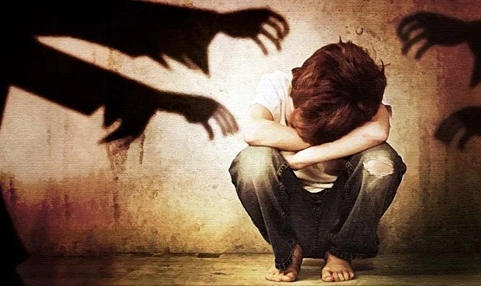In India, the protection of children from physical abuse, including child beating, is a critical aspect of ensuring their safety, dignity, and well-being. Over the years, Indian laws have evolved to provide stronger safeguards against such offenses. This article outlines the legal provisions and mechanisms in place to combat child beating in India.
1. Constitutional Provisions

The Indian Constitution lays the foundation for the protection of children’s rights:
- Article 15(3): Empowers the state to make special provisions for children.
- Article 21: Guarantees the right to life and personal liberty, which includes protection from violence.
- Article 39(e) and 39(f): Directs the state to ensure that children are not abused and are given opportunities to develop in a healthy manner.
2. The Juvenile Justice (Care and Protection of Children) Act, 2015
The Juvenile Justice Act, 2015 is a comprehensive law that addresses the care, protection, and rehabilitation of children.
- Section 75: States that any person who assaults, abandons, abuses, or willfully neglects a child in their custody, leading to unnecessary mental or physical suffering, is liable to punishment. The penalty can include imprisonment for up to five years and/or a fine of ₹5 lakhs. In severe cases, the punishment may extend to 10 years.
3. Protection of Children from Sexual Offences (POCSO) Act, 2012
While the POCSO Act primarily focuses on sexual offenses, it also indirectly addresses physical violence when it overlaps with sexual abuse. The act emphasizes the child’s safety and mandates reporting any form of abuse.
4. Indian Penal Code (IPC) Provisions
The IPC includes several sections that are applicable to child beating:
- Section 323: Penalizes anyone who voluntarily causes hurt, which includes physical assault, with imprisonment of up to one year, a fine, or both.
- Section 325: Applies to cases of grievous hurt and prescribes stricter penalties.
- Section 352: Punishes assault or the use of criminal force against a person.
- Section 506: Covers criminal intimidation, which may accompany physical abuse.
5. The Right to Education (RTE) Act, 2009
The RTE Act prohibits corporal punishment in schools:
- Section 17(1): Explicitly bans physical punishment and mental harassment of children in educational institutions.
- Non-compliance can lead to disciplinary action against the teacher or staff member responsible.
6. Protection of Civil Rights Act, 1955
This act protects children from discriminatory practices that may include violence or abuse, especially in cases of caste-based violence or societal marginalization.
7. The Prohibition of Corporal Punishment
The National Commission for Protection of Child Rights (NCPCR) has issued guidelines against corporal punishment. Schools are instructed to maintain a zero-tolerance policy towards any form of physical or mental abuse of students.
8. Reporting Mechanisms
Several platforms are available for reporting incidents of child beating:
- Childline 1098: A 24/7 helpline for children in distress.
- Police: Incidents can be reported to local authorities under the relevant IPC or Juvenile Justice Act provisions.
- NCPCR: Complaints can be filed online or directly with the commission.
9. Challenges in Implementation
Despite robust laws, several challenges persist:
- Lack of awareness among parents, guardians, and educators about the illegality of child beating.
- Cultural acceptance of corporal punishment as a disciplinary measure.
- Underreporting due to fear, stigma, or lack of knowledge about reporting mechanisms.
10. The Way Forward
To address child beating effectively, India needs a multi-pronged approach:
- Awareness Campaigns: Educate parents, teachers, and caregivers about alternative disciplinary methods.
- Stringent Enforcement: Ensure that laws are strictly implemented and violators are held accountable.
- Counseling and Rehabilitation: Provide support to victims and their families to overcome trauma.
- Training Programs: Equip educators and caregivers with skills to manage children without resorting to violence.
Conclusion
Child beating is a grave violation of a child’s rights and can have lasting physical and psychological effects. Indian laws provide robust frameworks to combat such abuse, but effective implementation and societal change are key to eradicating this practice. Protecting children from violence is not just a legal mandate but a moral responsibility for every individual in society.
Hina Abbasi is Editor and a passionate sports and entertainment content writer at WinnersMaze.com. Hina’s expertise spans across a wide range of sports, and interest in many TV shows allowing her to deliver insightful analysis and compelling stories that resonate with readers.

